China Education Equipment Purchasing Network News: According to the recent news of the Analysis and Testing Encyclopedia, an academic exchange meeting on "Application and Prospect of Near-Infrared Spectroscopy Analysis Technology in the Pharmaceutical Field" was held in Hall 4 of Beijing International Exhibition Center. More than 100 people, including representatives from scientific research institutes, national drug inspection systems, major domestic and foreign pharmaceutical companies and instrument manufacturers, attended the meeting. The meeting was chaired by Researcher Hu Changqin of China Food and Drug Administration.
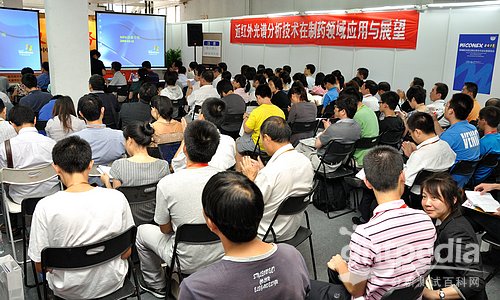
Venue
Academician Fang Jiaxiong of Shanghai Institute of Technical Physics, Chinese Academy of Sciences and Academician Lu Wanzhen of Beijing Petrochemical Research Institute of Sinopec attended the meeting.
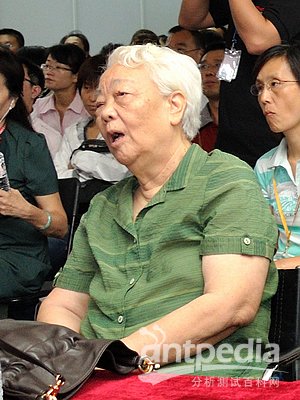
Academician Lu Wanzhen
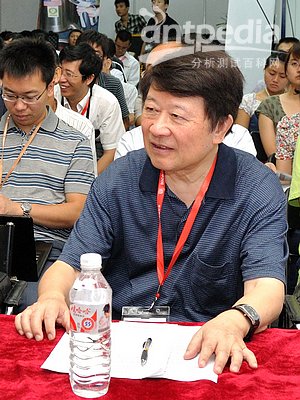
Academician Fang Jiaxiong
The following is an excerpt from the wonderful report.
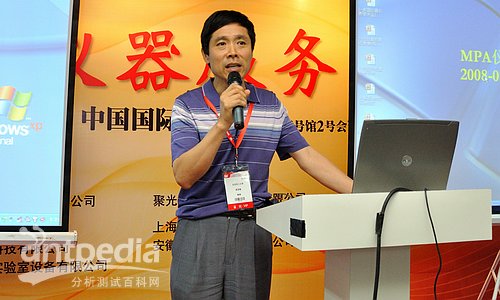
Professor Yuan Hongfu, Beijing University of Chemical Technology
Professor Yuan Hongfu from Beijing University of Chemical Technology first brought you a wonderful report entitled "Development of Near Infrared Analysis Technology in Drug Testing".
The content of Professor Yuan's report is mainly divided into the application of near infrared analysis technology in the circulation basin and pharmaceutical field; the current status of international and domestic standards related to it; the prospect of the application of near infrared analysis technology in China's drug inspection field.
1. Application of near-infrared analysis technology in circulation basin and pharmaceutical field
NIR analysis technology is a fast and non-destructive quality detection technology. It can detect the main components and properties of the sample. It has the characteristics of fast analysis, convenient operation, and simultaneous determination of multiple properties. It is especially suitable for quality random inspection (true and false identification, quality analysis) and process analysis for production optimization control. Near-infrared analysis is best at component screening and identification of fraud, and is the most ideal technology for law enforcement detection in the field of circulation.
2. Relevant domestic and international standards for near infrared analysis technology for drug testing
In 1999, the United States Pharmacopoeia officially formulated the general rule "1119" for near infrared spectrometers; the European Pharmacopoeia, the income in Chapter 2.2.40 is similar to the United States Pharmacopoeia "1119"; the Japanese 2009 Appendix II 2280-2287 income is similar to the United States Pharmacopoeia "1119" The guidelines for near-infrared spectrophotometry are published in the appendix of the second part of the 2005 edition of the Pharmacopoeia of the People's Republic of China.
3. Prospects for the application of near-infrared analysis technology in the field of drug control in China
Food and drug safety has been included in the national security category, which is directly related to the national health and life safety, as well as the government's ability to govern and national image. At present, the most important food and drug safety problems are quality problems. Solving these problems depends on scientific methodologies, of which NIR is the most potential method. Here Professor Yuan expressed two points of view: First, according to the Pharmacopoeia, the pharmaceutical industry must implement GMP, and the inspection work is heavy. The use of NIR can reduce costs and improve efficiency. In the future, pharmaceuticals cannot be separated from NIR. NIR will become the main analytical technique for rapid drug testing and quality control. The second is about the development of NIR. Focusing on the country ’s current major social needs, we have determined the application goals in the field of drug testing, so that China ’s NIR technology can truly and sustainably develop in a healthy manner.
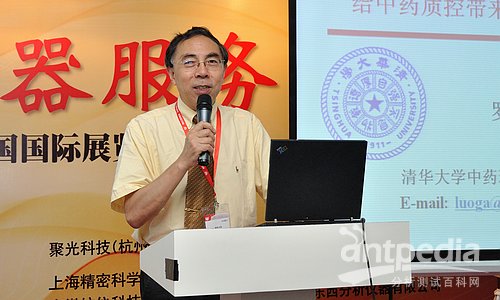
Professor Luo Guoan, Tsinghua University
Professor Luo Guoan from the Research Center for Modernization of Traditional Chinese Medicine at Tsinghua University brought a wonderful report entitled "Revolutionary Changes Brought to the Quality Control of Traditional Chinese Medicine by Near Infrared Spectroscopy Process Analysis Technology".
1. The basic concept of modern Chinese medicine production intelligent control system
The principle of establishing the modern quality standard system of traditional Chinese medicine is that the material basis of traditional Chinese medicine should be an effective compound group, the theory of compatibility of traditional Chinese medicine, it should be beneficial to the application of important patents, and it should reflect the sustainable development and advance with the times.
The goal and requirement of Chinese medicine quality control is to ensure the safety, effectiveness, stability and uniformity of medicines.
The basic concept of the intelligent control system for the production process of traditional Chinese medicine: one system, the intelligent control system for the production process of traditional Chinese medicine; two combinations, combining the quantitative analysis of multi-index components of the HPLC fingerprint of traditional Chinese medicine with online monitoring of near infrared spectroscopy, online quality analysis and intelligent control; three The key is the NIR / HPLC correlation model, automatic control, and intelligent control; the four effects ensure quality, save resources, save energy, and protect the environment.
2. Implementation plan and key technologies of modern Chinese medicine production intelligent control system
Qualitative control mode of traditional Chinese medicine quality: The quality control mode of traditional Chinese medicine should first reflect the integrity of traditional Chinese medicine; the fingerprint of traditional Chinese medicine can reflect the overall composition and characteristics of the chemical composition of traditional Chinese medicine, which is the preferred technology for qualitative and overall control of traditional Chinese medicine control; the multi-component of traditional Chinese medicine , Multi-target, multi-channel synergistic treatment.
Quantitative control mode for the quality of traditional Chinese medicine: combining multi-dimensional multi-interest fingerprint analysis and other analytical techniques to quantify various index components to achieve qualitative and quantitative comprehensive control of traditional Chinese medicine.
3. Application and implementation progress of intelligent control system for traditional Chinese medicine production
Professor Luo introduced the application examples of the intelligent control system for the production process of traditional Chinese medicine developed by the Research Center for Modernization of Traditional Chinese Medicine of Tsinghua University: the improvement of the quality standard of Qingkailing and the production process control (Hebei Shenwei); the online quality analysis and intelligent control of the column chromatography process of Chinese medicine Group, Salvia polyphenolate); online quality analysis and intelligent control of Chinese medicine extraction process (Jilin Aodong, Anshen Oral Liquid); online quality analysis and intelligent control of traditional Chinese medicine mixing process (Chengde Jingfukang), the results show that the near infrared system is used Online monitoring and control of the extraction process of Chinese medicine is feasible.
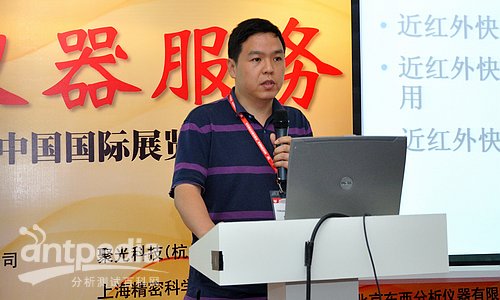
Yin Lihui, Director, Standardization Research Office, China Food and Drug Administration
Director Yin Lihui of the Standardization Research Office of China Food and Drug Administration made a report entitled "The Role of Near-Infrared Spectroscopy Technology in Drug Supervision" at the exchange meeting.
Director Yin ’s report has four main contents:
1. Demand for rapid inspection technology in drug supervision
At present, "adulteration, adulteration, illegal addition, counterfeit and shoddy" in foods and health products are rampant. In response to this situation, they have also put forward requirements for drug supervision. The key technology for establishing scientific and effective rapid inspection is to combat counterfeit food and drugs. Important technical guarantee for successful operation. Pertinence and timeliness are the two most important characteristics of drug inspection for rapid inspection technology.
2. Features of near infrared fast detection technology
The near-infrared fast detection technology can determine the physical and chemical information of the measured substance, reducing the sample pretreatment, and the application is convenient and fast.
3. Application of near infrared rapid inspection technology in drug supervision
The basis and difficulty of the promotion of near infrared drug rapid inspection technology are focused on the transfer of models. At present, the transfer of models is limited to instruments of the same model. The spectrum measured on different instruments may be different in X axis, Y axis and even resolution. When modeling or analyzing spectra measured on different instruments, certain spectral corrections must be performed first to ensure successful model / spectrum transfer. Director Yin demonstrated the practical application of NIR one-to-one model theory through concrete examples.
4. Prospects of research and application of near infrared fast detection technology
The key points of rapid inspection subject research are: the establishment of a database of physical and chemical properties of essential drugs, illegally added chemical components and common toxic and hazardous substances, a spectral database, a database for the identification of drug appearance and a mass spectrometry database to improve inspection efficiency and save inspection resources; Technical standards and specifications for rapid detection of drugs and illegally added chemical components; industrialization of rapid detection equipment, miniaturization, portability, automation, and networking of large-scale instruments, exploring the industrialization of China ’s rapid detection technology, and developing Commercial kits and portable testing instruments.
Former British GlaxoSmithKline and American Merck Pharmaceuticals Dr. Luo Suqin gave a report entitled "European and American GMP Standards for Near-Infrared Analysis Technology in Pharmaceutical Quality Analysis Standards and Audit Requirements" at the exchange meeting.
Dr. Luo's report mainly introduces the challenges faced by NIR technology in the pharmaceutical field, the guidance of drug regulatory agencies of various countries on NIR technology, and the application of NIR drug analysis methods, and shares with you about US FDA and EU EMA. Experience in reviewing, registering, changing, implementing strategies, etc.
At present, the challenges faced by the pharmaceutical industry in implementing NIR analysis technology are mainly due to the late start of research and the unfamiliarity of NIR technology; the near-infrared breadth and depth of instrument manufacturers are not enough; the application level is relatively backward, and the experience of GMP verification and regulatory food is insufficient. In this regard, Professor Luo made his own suggestions.
Details-The near infrared spectrometer has the characteristics of simple, fast and non-destructive analysis, and its related hardware and software equipment has become mature, which can become a weapon for pharmaceutical quality control.
In terms of examination and approval, drug regulatory authorities such as Europe, America and Japan have accepted NIR spectroscopy as a qualitative and quantitative analysis method.
Implementation: It is recommended that domestic enterprises should be in line with international pharmaceutical applications. Details-Enterprises should strengthen the training of near-infrared analysts (QC / R & D), understand the details of method validation and drug regulatory approval (QA / RA), and seek technical contacts from the Food and Drug Administration / CTC.
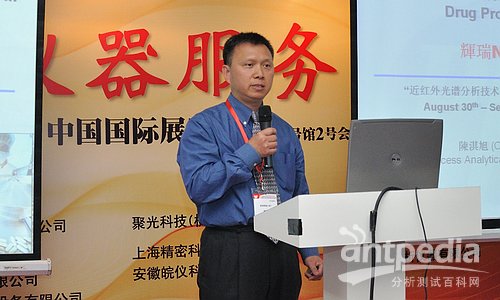
Chen Qixu, Manager, Process Analysis Science Department, Pfizer
Chen Qixu, Manager of Process Analysis Science Department of Pfizer Pharmaceuticals, USA, gave a report entitled "Application of Near Infrared in the Pharmaceutical Industry-Pfizer NIR / PAT Experience Sharing" at the exchange meeting.
In the report, Mr. Chen shared with you the experience and main experience of Pfizer in implementing NIR / PAT, including the reasons for Pfizer to implement NIR / PAT, how to decide where to use NIR / PAT, etc.
Experience sharing-NIR / PAT is used in pharmaceuticals: NIR can be an effective tool for optimizing manufacturing capabilities, let us understand how to control, control and control key attributes by implementing monitoring and adjusting key parameters, is expected to reduce the risk of process variation, and effectively improve Process capability and product quality.
Experience sharing-the impact of real-time release (RTRt) on the quality system (QS): multiple approaches are expected to achieve RTRt, and its implementation depends on the understanding of products and processes, quality risk management, robust control strategies, ICHQ10-compliant science and Risk-based quality systems, etc .; RTRt benefits include lower manufacturing costs and cycle time, reducing waste and improving productivity, and increasing trust in products.
Experience sharing-using NIR / PAT in a continuous process: facilitating control strategy steps, continuous quality verification (CQV), and real-time release is not an easy task.
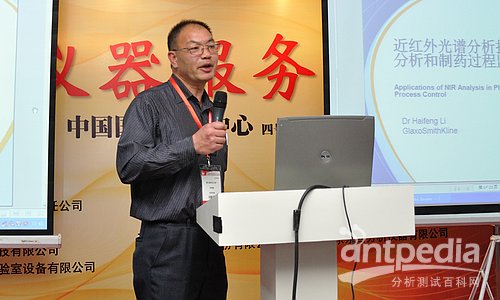
Dr. Haifeng Li, Analyst, GlaxoSmithKline Pharmaceuticals
Dr. Haifeng Li, an analysis expert at GlaxoSmithKline Pharmaceuticals, gave a report entitled "Application of Near Infrared Spectroscopy Technology in Drug Quality Analysis and Pharmaceutical Process Monitoring" at the exchange meeting.
Near-infrared analysis-an emerging rapid drug analysis technology that can directly test samples without sample dilution and projection and reflection test methods. Compared with traditional testing technology, near-infrared technology has the advantages of rapid determination, simple use, strong flexibility, and improved detection reliability. It can be applied in the entire production process of pharmaceutical companies, such as production process control, online analysis, offline Analysis methods, etc. However, there are some limitations. At present, it is generally accepted as an alternative inspection for incoming material acceptance rather than the main method of chemical identification of substances; near-infrared product testing has not been generally accepted as the main registration method for finished product testing.
Near-infrared quantitative analysis-reliability and stability
Near-infrared quantitative analysis was introduced to drug analysis and measurement from the late 1990s to the early 20th century and was accepted as the drug final product release measurement. Due to the reliability of the instrument, the multiple calibration techniques and the improved drug regulatory environment, it has been widely used in recent years. GlaxoSmithKline's experience demonstrates the reliability and long-term stability of near-infrared analysis for finished dosage forms.
Near-infrared quantitative analysis-offline laboratory analysis
The near-infrared laboratory quantitative analysis is mainly used for the analysis of moisture content and the determination of the content and uniformity of the intermediate or finished drug in vivo, typically tablets and capsules.
Near-infrared quantitative analysis-in-line measurement
The near-infrared internal measurement of solid product processes is used for process understanding, substance testing and production transfer.
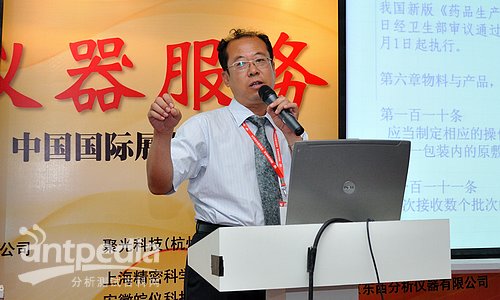
Mr. Zhou Xueqiu, application expert of Bruker Instruments
Mr. Zhou Xueqiu, an application expert of Bruker Instruments, gave a report entitled "The Great Opportunities for the Implementation of the New GMP for Near-Infrared Spectroscopy" at the exchange meeting.
The new version of China's "Pharmaceutical Production Quality Management Standards" has been reviewed and approved by the Ministry of Health on October 19, 2010, and will be implemented on March 1, 2011. The draft outline of the 2015 edition of the Pharmacopoeia of the People's Republic of China was published in December 2010. The latter mentioned the application of expanded infrared spectroscopy in the identification of formulations.
The mid-infrared spectroscopy technique is rarely used for rapid inspection due to its very limited testing depth and limited application to solid dosage forms. The applications of near infrared spectroscopy and Raman spectroscopy in fast detection technology were introduced respectively.
Raman spectroscopy: It has sharp bands and strong characteristics; it can be made into a very small and sturdy instrument; it can penetrate transparent packaging for measurement and other advantages. But there are also some disadvantages, such as the inability to penetrate the strong scattering packaging layer for measurement; small test points, and sometimes the sample representation may be insufficient; fluorescence interference is a significant problem, especially natural products; if the laser is strong or the sample is colored, it may be Causes the sample to scorch. Mr. Zhou demonstrated the application of Raman spectroscopy in rapid drug testing through examples such as doxycycline hydrochloride capsules, sildenafil, Cynomorium Chinese patent medicine, and colored (pink) amoxicillin tablets.
The advantages of near-infrared spectroscopy are: greater depth and volume of the test; penetration through transparent packaging and strong scattering packaging layers for measurement; the use of derivative processing methods to improve the sharpness of the band; the best instrument with high resolution and wide Wavelength range. Mr. Zhou vividly demonstrated the application of near infrared spectroscopy technology in rapid drug testing through examples of doxycycline hydrochloride capsules, erythromycin ethylsuccinate tablets, and the illegal addition of sildenafil to Chinese patent medicines.
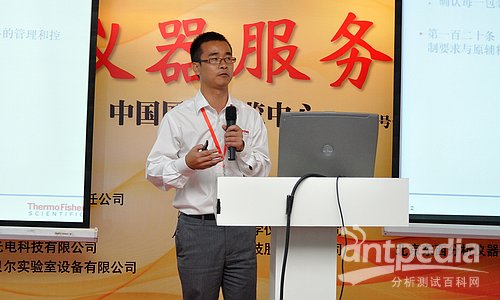
Mr. Deng Dewen, Application Engineer, Thermo Fisher Scientific
Mr. Deng Dewen, an application engineer of Thermo Fisher Scientific, on behalf of his agent, Beijing Yingan Technology Co., Ltd., brought a "portable solution to the material confirmation of the new GMP" at the exchange meeting.
Mr. Deng mainly introduced on-site analysis provided by the company, including solutions for substance identification, identification, screening, and quantitative analysis. It mainly includes the following three models:
TruScan Handheld Raman Spectrometer: Handheld Raman for solid and liquid material identification, which can be sampled through packaging without sample preparation; adopts ultra-specific technology and meets 21CFR part 11 specifications; built-in barcode reader.
TruDefender FT Handheld Fourier Infrared Spectrometer: Designed for the first-time response of hazardous scenes, the patented chemometrics software can directly give clear final results without user intervention and judgment; intuitive, The menu-type operation interface can be used skillfully through simple training.
microPHAZIR handheld near-infrared spectrometer: portable near-infrared analysis is achieved, extremely accurate; fast reading 3-5 seconds; very sturdy and reliable; can operate under any conditions; achieve seamless transfer model; low energy consumption With a variety of analysis platforms and built-in chemometrics, it can be used for data collection and analysis by professional users and daily application tests for ordinary users.
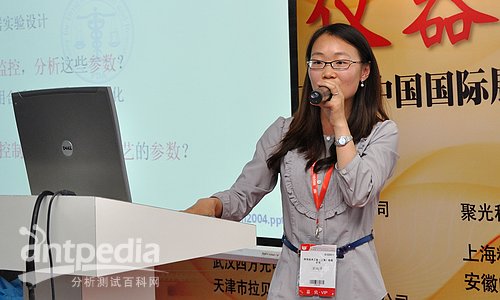
Ms. Luo Xiaofang, Bayer Technology Engineering (Shanghai) Co., Ltd.
Ms. Luo Xiaofang of Bayer Technology Engineering (Shanghai) Co., Ltd. gave a report entitled "Applying Innovative Process Analysis Technology to Process Development, Quality Control and Production" at the exchange meeting.
In the report, Ms. Luo introduced the example of Bayer applying innovative process analysis technology to process development, quality control and production. Ms. Luo said that many methods have been widely used in the petrochemical and chemical industries, and are increasingly used in pharmaceutical and biotechnology processes. Due to the pressure and demand of the market environment, FDA has begun to actively promote the PAT technology. The online analysis technology provides a concept of a measurement platform that has proved to be feasible. The method used is consistent with the routine analysis methods in the laboratory. Online analysis technology will make a significant contribution to the perfect operation and control process in the pharmaceutical process.
Plastic Dish Rack,Plastic Dish Drainer,Dish Drainer,Dish Strainer
Jiangmen Jianghai Jianshang Houseware Co.,LTD. , https://www.jianshanghouseware.com